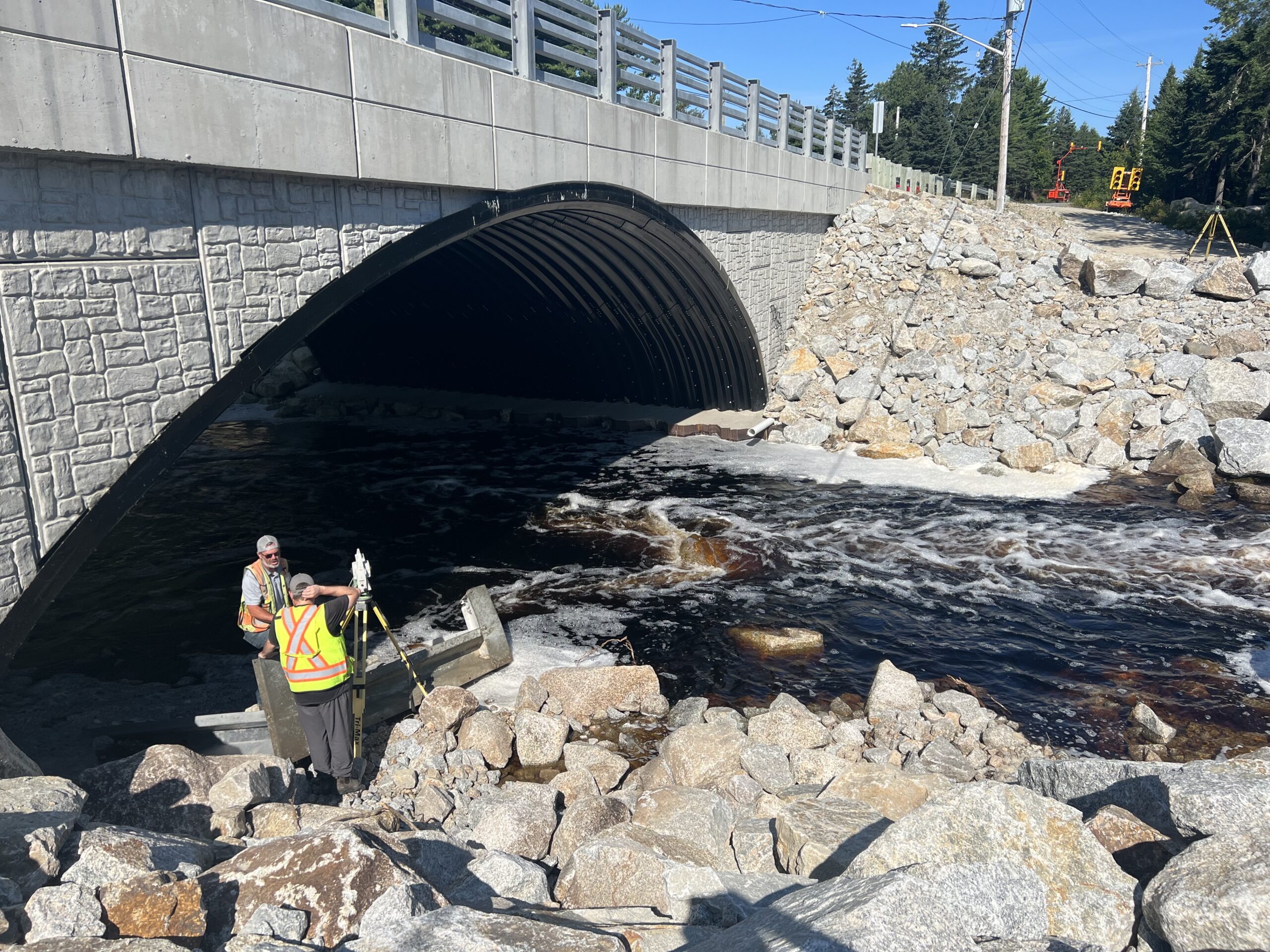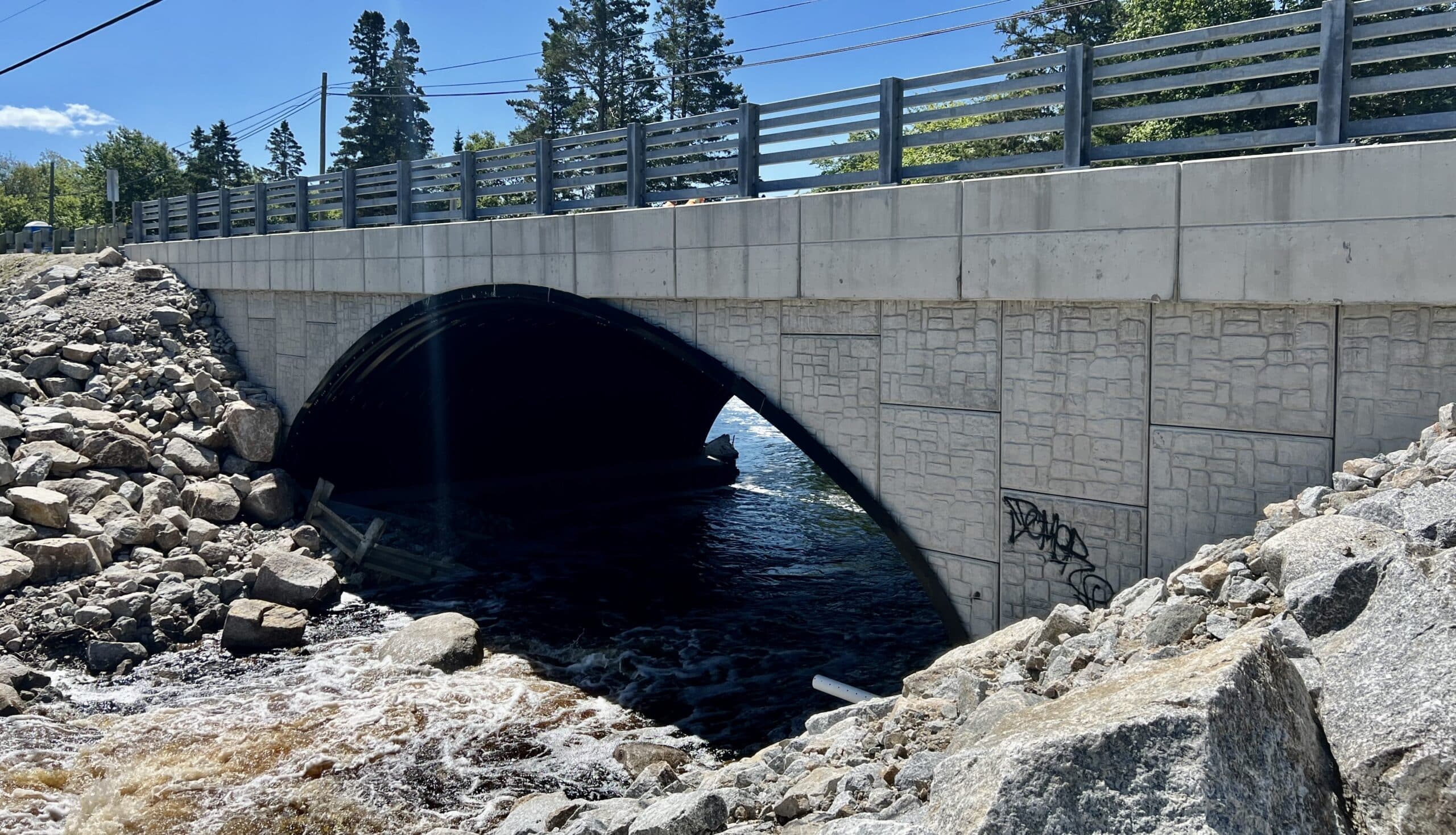June 3, 2024
In 2019, AIL designed and supplied a Super-Cor Arch with Best-Kote Polymer Coating and MSE Precast Panel Headwalls. The structure replaced an older wooden span bridge at East River on Highway 3, near Chester, Nova Scotia. View Project Profile >
The crossing is located on a narrow isthmus where the East River empties into the ocean. The river is prone to aggressive hydraulic flows and active tidal surges, so the foundation treatment required some special measures.
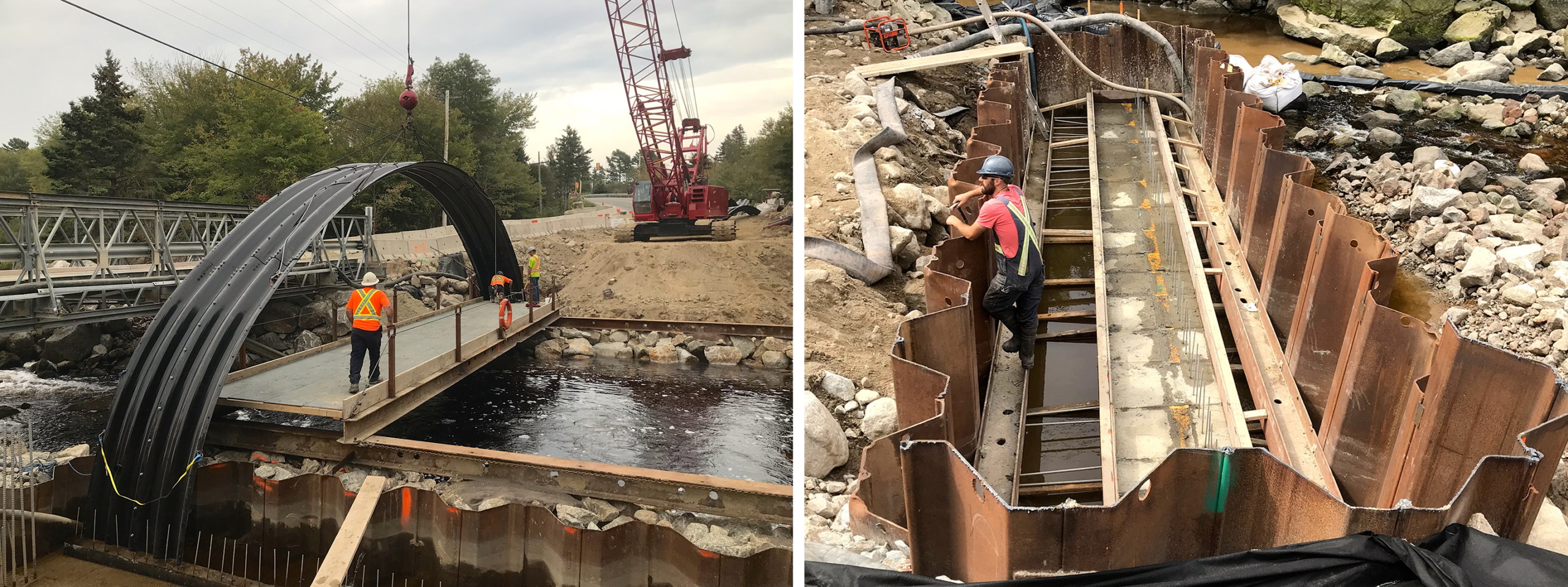
These measures involved installing sheet pile cofferdams with tremie concrete to block water infiltration. Then the cast-in-place footings were installed directly on the bedrock. The cofferdams were capped with concrete 300+ mm above normal high-water level with armour stone scour protection.These measures helped preserve the integrity of the plate structure in the extreme rain event of July 2023.
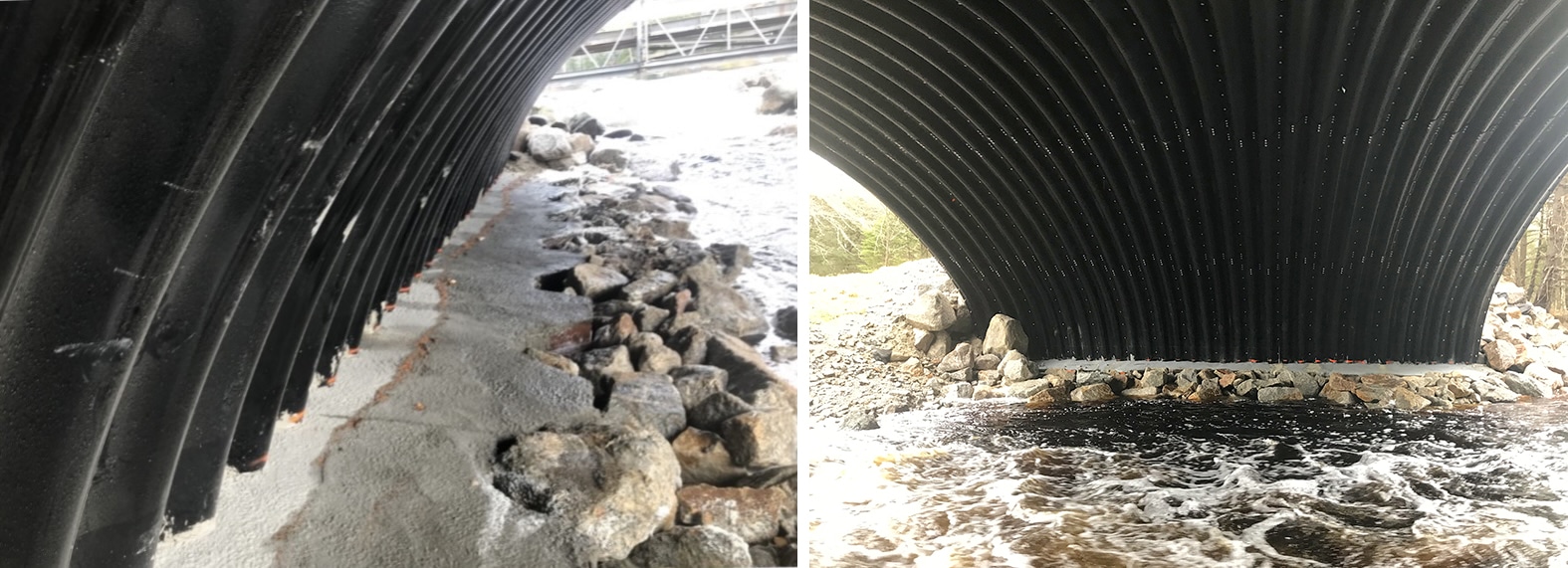
Severe rain event hits Nova Scotia hard on July 22, 2023
Torrential rains drenched Nova Scotia on July 22, with 200-250 mm falling in just a few hours. This part of the province was one of the hardest-hit areas. Previously, the threshold for a “once-in-a-hundred-years” rain event was considered to be 172 mm. The province announced that 500 sections of roadway and 48 bridges were damaged to varying degrees. Many roads and bridges were closed and a state of emergency was declared.

NSDPW calls on AIL for assistance
Officials from the Nova Scotia Department of Public Works (NSDPW) called AIL on July 24, reporting that the East River Bridge had sustained an extreme rain event and the embedment of the side slopes were eroded in the area where the MSE Walls were installed on three of the four quadrants. They asked if we could meet them on-site July 25 to provide technical advice on the existing conditions and remediation measures.
Our team met with NSDPW at the site to survey the situation. The main issue was that the extreme weather event had washed away much of the armour stone and the MSE Precast Panel Walls had sustained varying degrees of undermining to three of the four quadrants. Although much of the armour stone protection had been washed away, the cofferdam structures remained intact and there was no evidence of any effect on the plate structure itself or the traffic barriers and roadway above.

Notably, a nearby span bridge under Highway 103 had its supporting piers severely undermined in the same rain event, resulting in a lengthy closure.
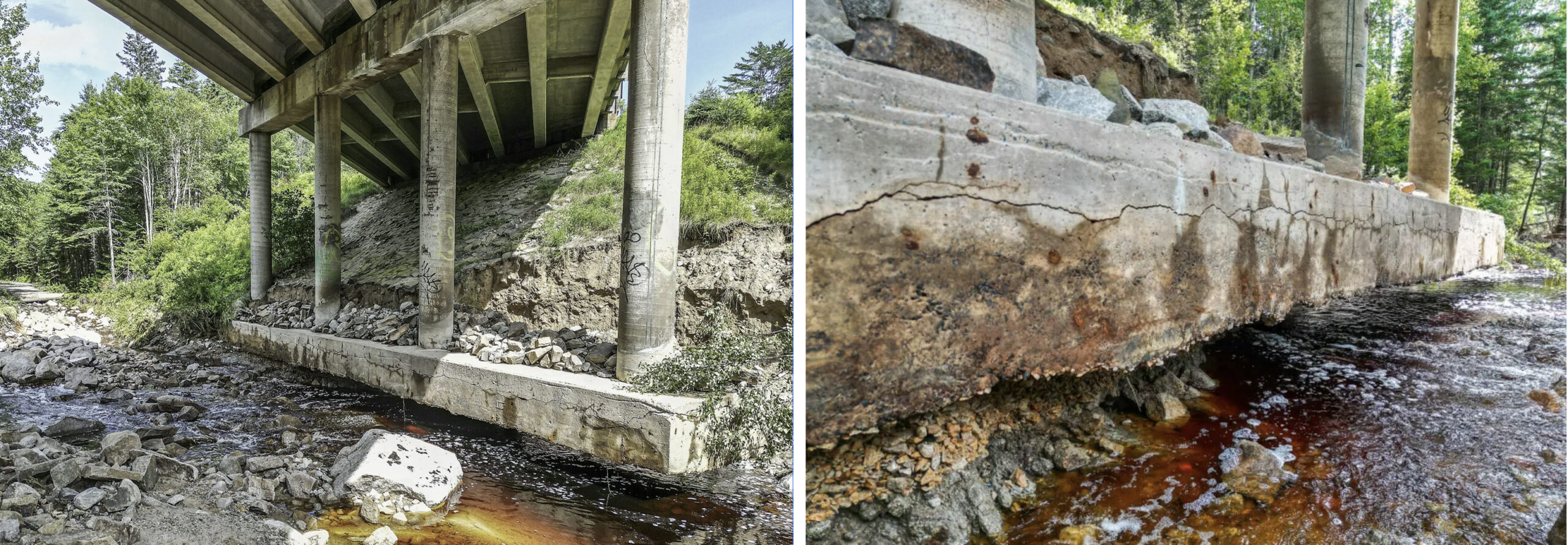
We offered the following recommendations to NSDPW:
- Fill all voids under the MSE Walls as quickly as possible to prevent any further erosion of engineered backfill that supports the highway traffic.
- All voids could be filled with grout or structural expandable foam capable of supporting pressures from the MSE Walls.
- Protect the MSE Walls with a more robust application of armour stone.
- Perform a detailed total station survey and monitor any movements over the short, medium and long term.
The following images show some before and after views of the remediation efforts.
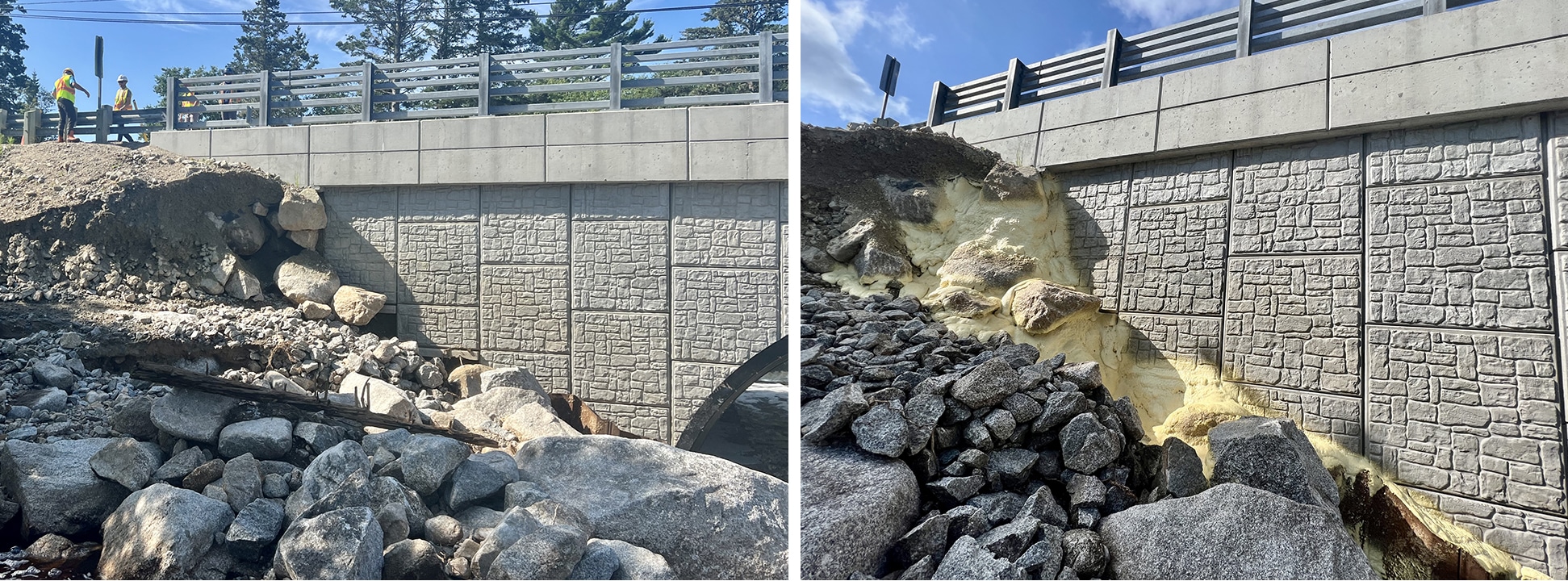
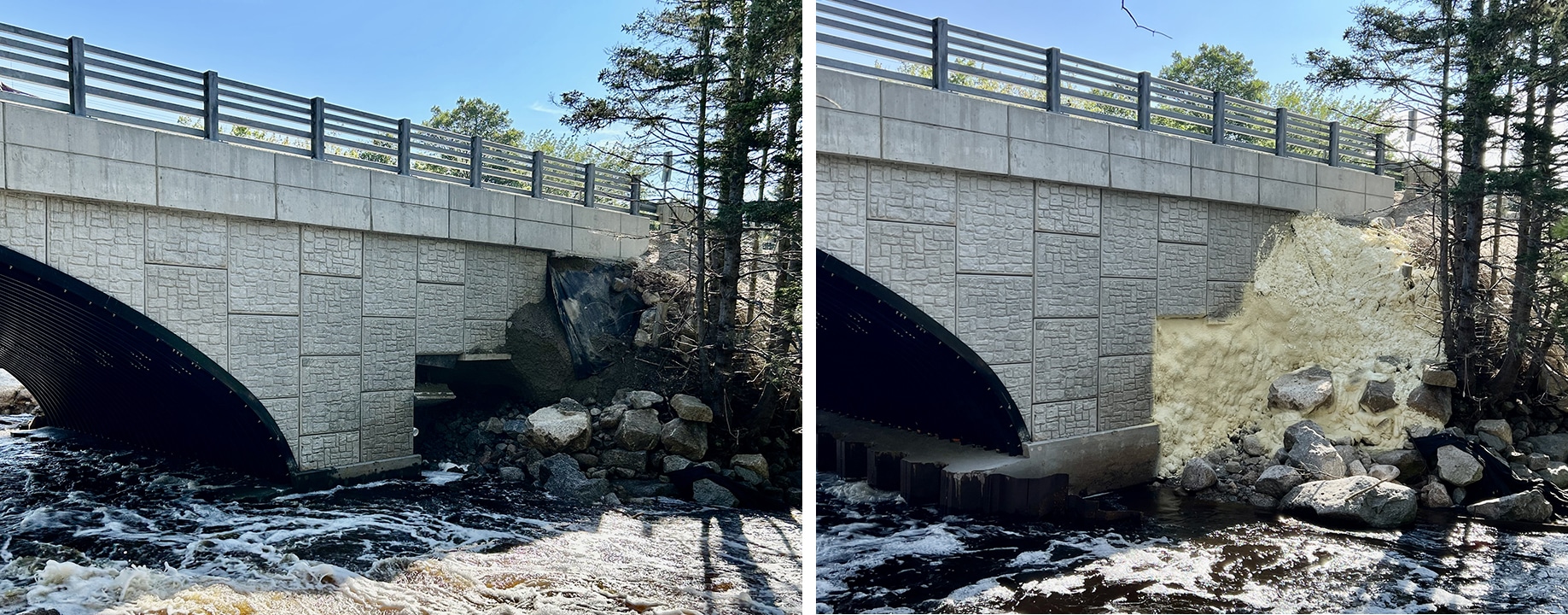
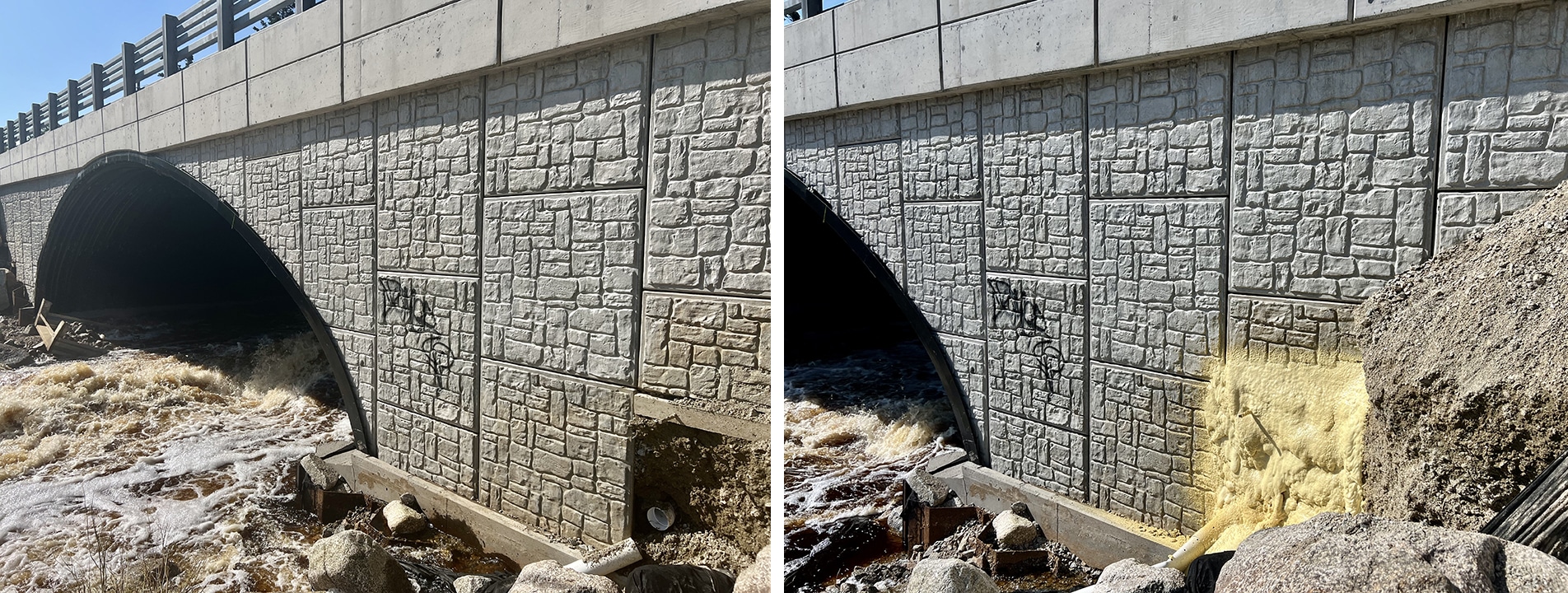
Highway reopened ten days after initial closing
The remedial work was expedited, and the bridge reopened to traffic ten days after the initial closing. The restored armour stone can be seen in the following images below.
